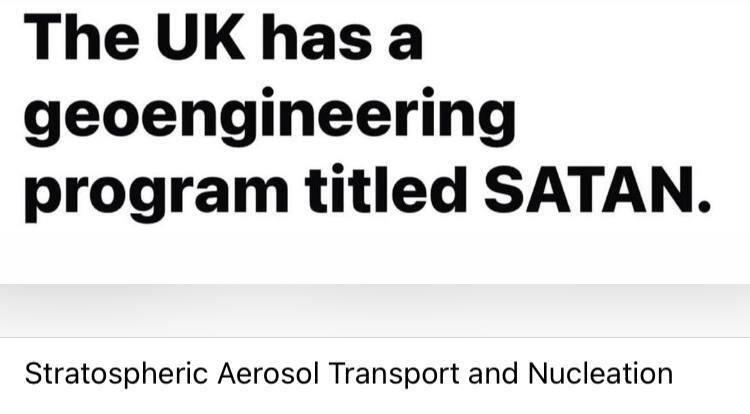bitcoinstr on Nostr: Wow yes this is real Stratospheric Aerosol Transportation Stratospheric aerosol ...
Wow yes this is real
Stratospheric Aerosol Transportation
Stratospheric aerosol transportation and nucleation are key aspects of solar geoengineering techniques aimed at reflecting solar radiation to mitigate global warming. One notable project in this field is SATAN (Stratospheric Aerosol Transport and Nucleation), which was conducted in the UK and involved launching a high-altitude weather balloon filled with sulfur dioxide into the stratosphere.
The SATAN project, while primarily designed to test equipment, has sparked significant debate due to concerns about the potential unintended consequences of such technologies. The balloon systems used in SATAN were made from stock and hobbyist components, with hardware costs under $1,000.
Research on stratospheric aerosol injection (SAI) continues to explore the transport and nucleation of aerosols in the stratosphere. A Lagrangian trajectory model has been used to analyze how injected particles are transported and their lifetimes in the stratosphere, showing that more than half of the particles injected in the tropical lower stratosphere undergo quasi-horizontal transport to mid-latitudes.
Studies also indicate that solid particles like calcite and alumina could be used as alternatives to sulfur dioxide for SAI, potentially reducing risks such as stratospheric warming and ozone depletion.
These technologies are highly controversial and involve significant uncertainties regarding their impacts on the climate system, including regional weather patterns, agricultural yields, and human health.
Stratospheric Aerosol Transportation
Stratospheric aerosol transportation and nucleation are key aspects of solar geoengineering techniques aimed at reflecting solar radiation to mitigate global warming. One notable project in this field is SATAN (Stratospheric Aerosol Transport and Nucleation), which was conducted in the UK and involved launching a high-altitude weather balloon filled with sulfur dioxide into the stratosphere.
The SATAN project, while primarily designed to test equipment, has sparked significant debate due to concerns about the potential unintended consequences of such technologies. The balloon systems used in SATAN were made from stock and hobbyist components, with hardware costs under $1,000.
Research on stratospheric aerosol injection (SAI) continues to explore the transport and nucleation of aerosols in the stratosphere. A Lagrangian trajectory model has been used to analyze how injected particles are transported and their lifetimes in the stratosphere, showing that more than half of the particles injected in the tropical lower stratosphere undergo quasi-horizontal transport to mid-latitudes.
Studies also indicate that solid particles like calcite and alumina could be used as alternatives to sulfur dioxide for SAI, potentially reducing risks such as stratospheric warming and ozone depletion.
These technologies are highly controversial and involve significant uncertainties regarding their impacts on the climate system, including regional weather patterns, agricultural yields, and human health.
quoting note1l7u…ezcw